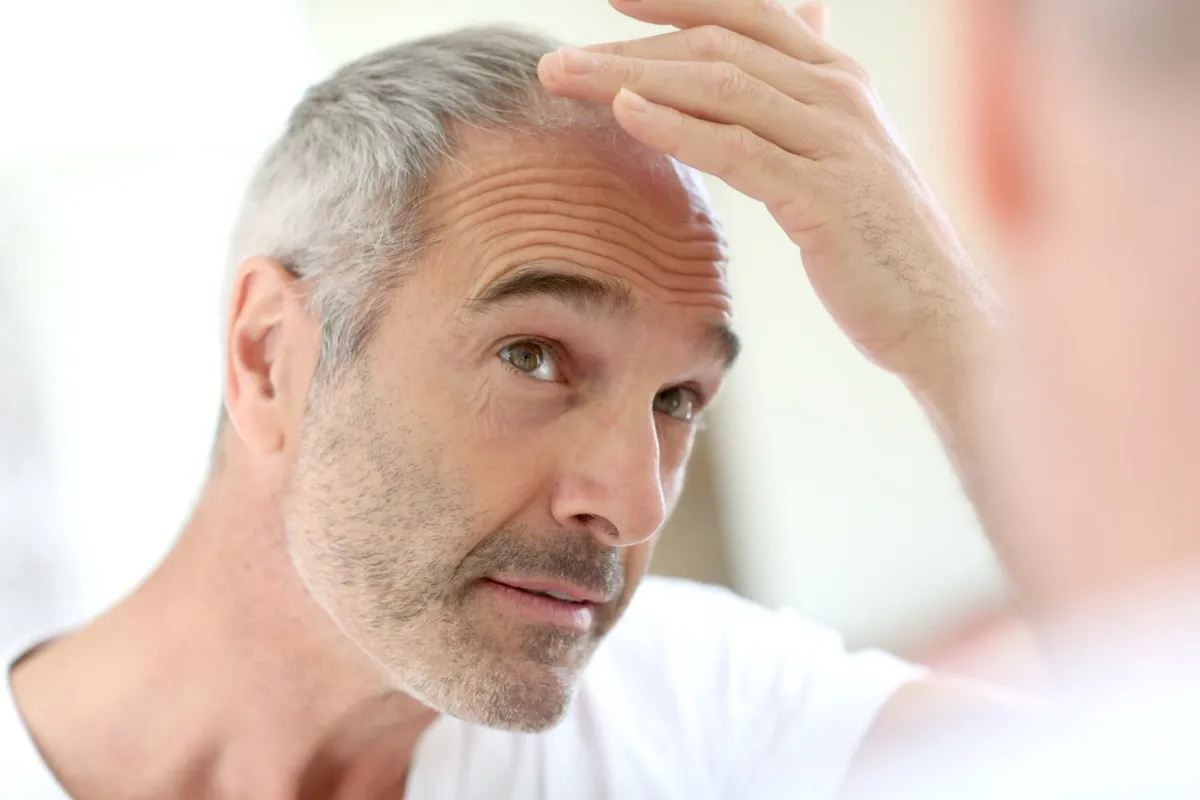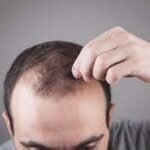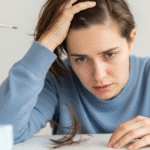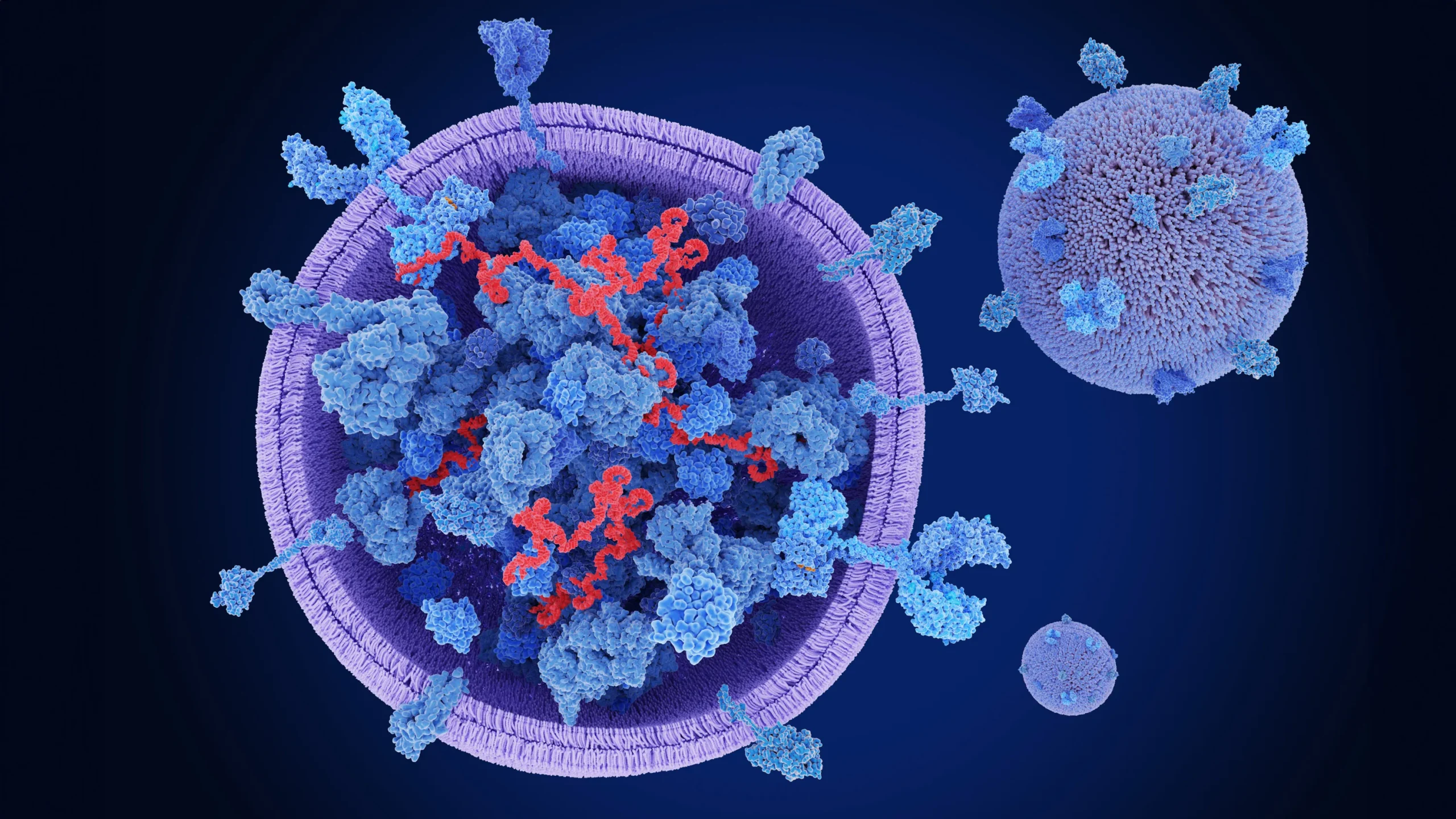Summary Exercise can support hair health by improving scalp circulation, reducing stress, and balancing hormones. While it won’t cure genetic baldness, moderate workouts may help slow shedding and strengthen follicles.Does Exercise Reduce Hair Loss? Overtraining, poor diet, or sweat buildup can worsen hair loss, so balance and scalp care are key. Combining exercise with treatments …
Summary
Exercise can support hair health by improving scalp circulation, reducing stress, and balancing hormones. While it won’t cure genetic baldness, moderate workouts may help slow shedding and strengthen follicles.Does Exercise Reduce Hair Loss? Overtraining, poor diet, or sweat buildup can worsen hair loss, so balance and scalp care are key. Combining exercise with treatments and aftercare offers the best results.

Table of Contents
Introduction
Are you seeing more hair fall than usual and wondering, does exercise reduce hair loss? While exercise isn’t a miracle cure, studies show it can improve scalp circulation, balance hormones, and lower stress—all factors that support healthier hair. In this blog, you’ll discover how different types of exercise affect hair, what mistakes to avoid, and how to use workouts alongside treatments for real results. By the end, you’ll know how to create a safe, effective plan that protects your hair while improving your overall health.
Understanding Hair Loss Types
Genetic vs Non-Genetic Hair Loss
Not all hair loss is the same. Androgenetic alopecia (male or female pattern baldness) is genetic and caused by sensitivity to the hormone DHT. Exercise alone cannot reverse this, though it may help slow progression by balancing hormones and reducing stress.
Non-genetic causes like telogen effluvium (temporary shedding after stress, illness, or pregnancy) or nutrient deficiencies often respond better to lifestyle changes, including regular exercise.
How Lifestyle Factors Contribute
Unhealthy diets, poor sleep, and chronic stress can accelerate shedding. Exercise acts as a natural regulator—it reduces cortisol (the stress hormone), improves sleep quality, and enhances nutrient absorption. These indirect effects are just as important as direct scalp circulation.
How Exercise Can Reduce Hair Loss
Improved Scalp Blood Flow
When you exercise, your heart pumps faster, sending oxygen-rich blood throughout the body. This improved circulation nourishes hair follicles, providing them with vital nutrients that support growth and strength.
Hormone Regulation
Regular workouts may help lower DHT levels, one of the key culprits in genetic hair loss. Exercise also balances insulin and reduces inflammation, both linked to healthier hair follicles.
Stress Reduction & Sleep Quality
Stress is a known trigger for hair shedding. By lowering cortisol and improving deep sleep cycles, exercise supports the natural hair growth cycle. People who exercise regularly often report fewer episodes of stress-related shedding.
Exercise Types, Intensity, and Timing
Aerobic vs Strength Training
- Aerobic exercise (jogging, cycling, swimming) improves circulation and reduces stress.
- Strength training supports hormone balance and muscle growth but should be practiced in moderation.
- High-intensity interval training (HIIT) can provide benefits but may raise cortisol if overdone.
Finding the Right Intensity
Moderate activity for at least 150 minutes per week is recommended for overall health and hair support. Over-exercising, however, can backfire by causing nutrient depletion and hormonal imbalance.
Frequency and Duration
Consistency matters more than intensity. A balanced mix of 3–5 workouts per week is better for your hair than extreme daily sessions that stress the body.
When Exercise Might Worsen Hair Loss
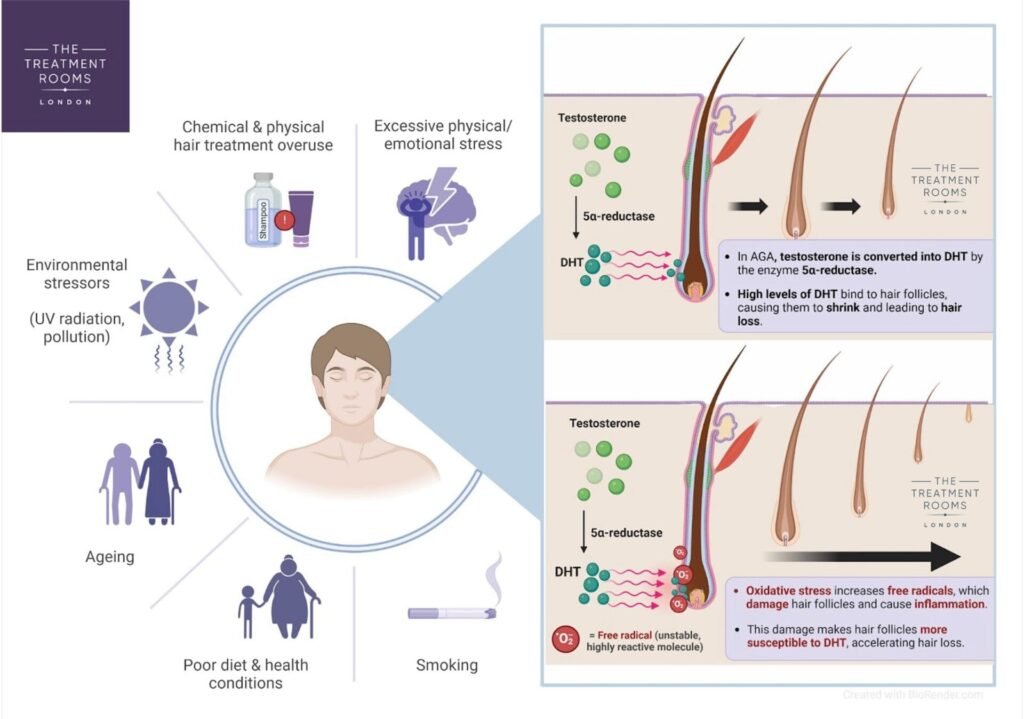
Overtraining and Rapid Weight Loss
Excessive workouts without proper recovery may lead to increased cortisol, loss of muscle mass, and nutrient depletion—all of which contribute to hair shedding. Crash diets combined with intense training are particularly harmful.
Sweat and Scalp Hygiene
Sweating is natural, but if left on the scalp, it can cause irritation, clogged follicles, or fungal infections. Regular post-workout scalp cleansing is key.
Hairstyles, Supplements, and Steroid Misuse
Tight ponytails or helmets during workouts can cause traction alopecia. Steroid use in bodybuilding may worsen DHT-driven hair loss. Choosing safe supplements and protective hairstyles is essential.
Post-Transplant & Treatment Recovery
When to Resume Exercise
After a hair transplant, sweating and strain can damage healing grafts. Most surgeons recommend avoiding heavy workouts for 10–14 days and resuming gradually.
Safe Activities & Precautions
- First week: Rest, light walking only
- Second week: Gentle yoga or stretching
- After 3–4 weeks: Normal workouts if healing is complete
Case Studies & Scientific Evidence
Clinical Studies
A 2021 Chinese study found that regular aerobic exercise improved hair density in participants with telogen effluvium. Another study highlighted lower cortisol and better scalp circulation among active individuals compared to sedentary groups.
Patient Experience
Many patients report reduced shedding within three months of adopting moderate workouts alongside proper nutrition and medical treatments. These real-life cases confirm exercise’s indirect but powerful role.
Practical Guide: Incorporating Exercise Safely for Hair Health
- Aim for 30 minutes of moderate activity (walking, cycling, light gym work) 5 days a week.
- Avoid crash dieting or excessive cardio without nutrition.
- Pair workouts with a balanced diet rich in protein, iron, zinc, and vitamins.
- Wash scalp gently after workouts; use mild shampoos to avoid irritation.
- Get 7–8 hours of sleep daily, as recovery is key for both muscles and hair.
FAQs
Will all kinds of exercise help reduce hair loss?
Not all. Aerobic workouts are more beneficial than extreme or steroid-driven strength training.
How long before I see results?
Indirect benefits like reduced shedding may appear within 3–6 months of consistent, moderate exercise.
Can exercise alone stop genetic baldness?
No, but it can slow progression when combined with treatments like minoxidil or a hair transplant.
Is exercise safe after a transplant?
Yes, but only after the initial healing phase. Always follow your surgeon’s advice.
Ready To Take Your Next Step
Exercise is powerful for your overall health—and it may give your hair an important boost, too. But the best results come from combining workouts with proper care and medical support.
Book a consultation with Dr. Uzma Irfan in Islamabad today to create a safe recovery plan.

